The AMD Ryzen Threadripper 1950X and 1920X Review: CPUs on Steroids
by Ian Cutress on August 10, 2017 9:00 AM ESTRise of the Tomb Raider (1080p, 4K)
One of the newest games in the gaming benchmark suite is Rise of the Tomb Raider (RoTR), developed by Crystal Dynamics, and the sequel to the popular Tomb Raider which was loved for its automated benchmark mode. But don’t let that fool you: the benchmark mode in RoTR is very much different this time around.
Visually, the previous Tomb Raider pushed realism to the limits with features such as TressFX, and the new RoTR goes one stage further when it comes to graphics fidelity. This leads to an interesting set of requirements in hardware: some sections of the game are typically GPU limited, whereas others with a lot of long-range physics can be CPU limited, depending on how the driver can translate the DirectX 12 workload.
Where the old game had one benchmark scene, the new game has three different scenes with different requirements: Spine of the Mountain (1-Valley), Prophet’s Tomb (2-Prophet) and Geothermal Valley (3-Mountain) - and we test all three (and yes, I need to relabel them - I got them wrong when I set up the tests). These are three scenes designed to be taken from the game, but it has been noted that scenes like 2-Prophet shown in the benchmark can be the most CPU limited elements of that entire level, and the scene shown is only a small portion of that level. Because of this, we report the results for each scene on each graphics card separately.
Graphics options for RoTR are similar to other games in this type, offering some presets or allowing the user to configure texture quality, anisotropic filter levels, shadow quality, soft shadows, occlusion, depth of field, tessellation, reflections, foliage, bloom, and features like PureHair which updates on TressFX in the previous game.
Again, we test at 1920x1080 and 4K using our native 4K displays. At 1080p we run the High preset, while at 4K we use the Medium preset which still takes a sizable hit in frame rate.
It is worth noting that RoTR is a little different to our other benchmarks in that it keeps its graphics settings in the registry rather than a standard ini file, and unlike the previous TR game the benchmark cannot be called from the command-line. Nonetheless we scripted around these issues to automate the benchmark four times and parse the results. From the frame time data, we report the averages, 99th percentiles, and our time under analysis.
All of our benchmark results can also be found in our benchmark engine, Bench.
#1 Geothermal Valley Spine of the Mountain
MSI GTX 1080 Gaming 8G Performance
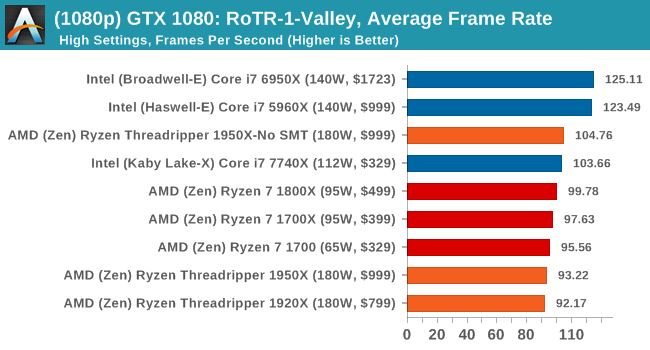
1080p

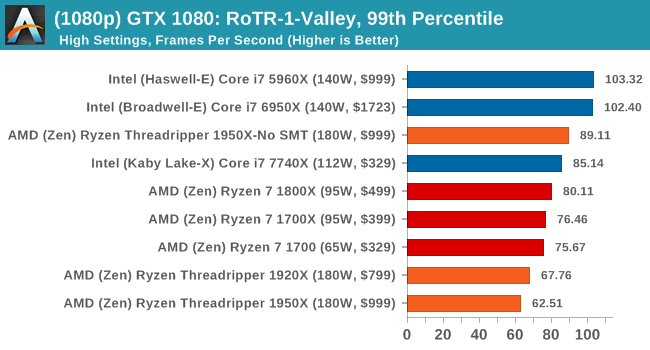
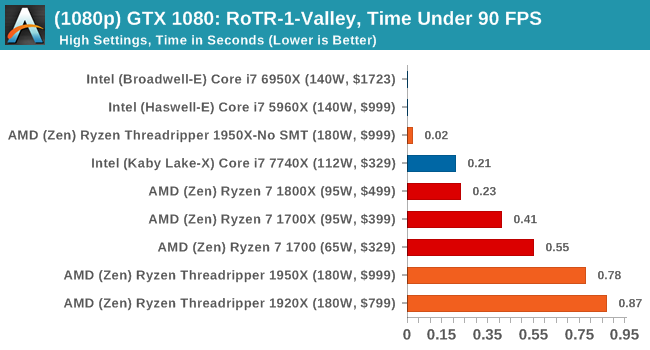
4K

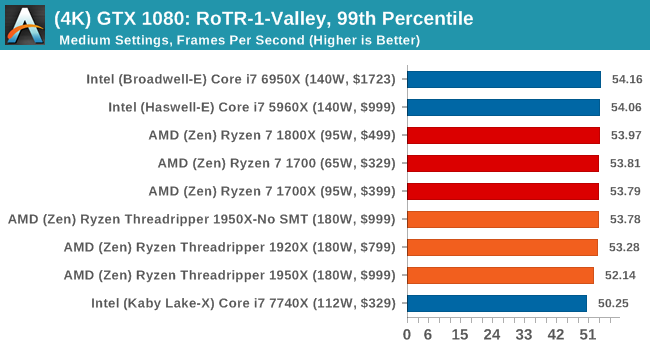
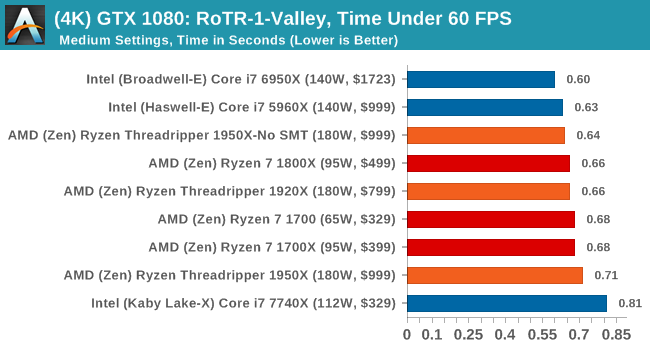
ASUS GTX 1060 Strix 6G Performance

1080p

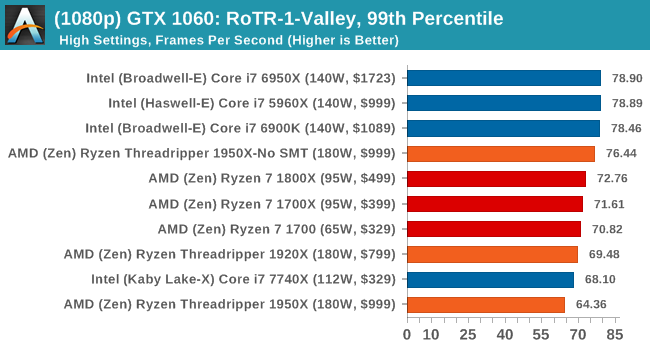
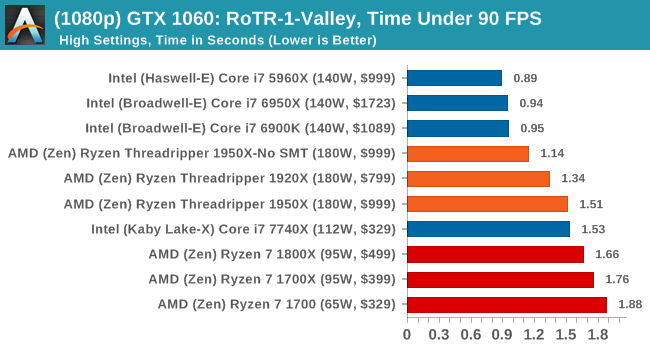
4K
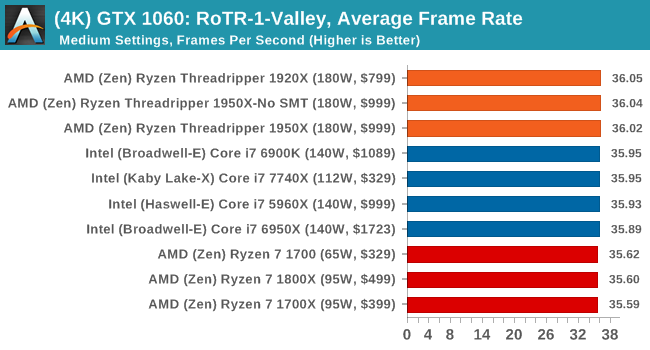


Sapphire Nitro R9 Fury 4G Performance
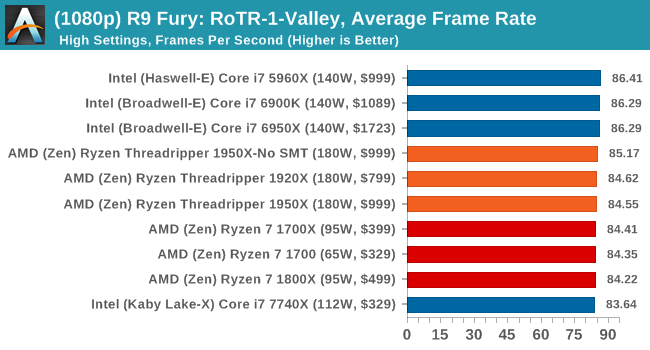
1080p

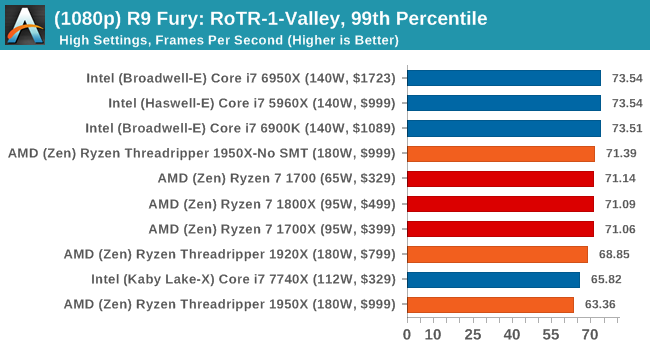
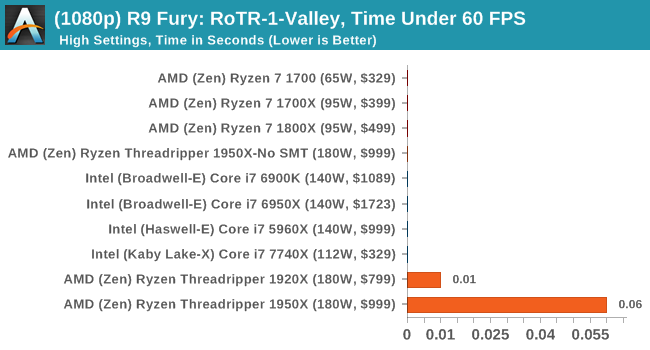
4K
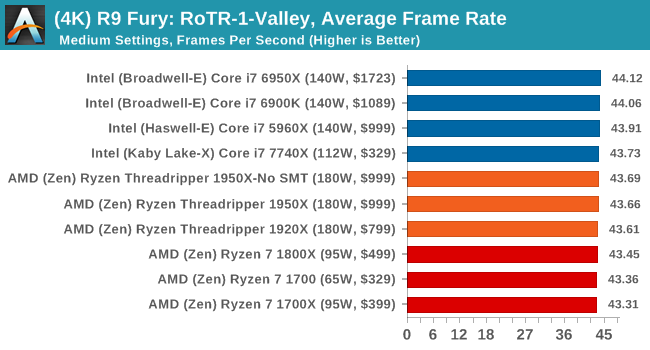
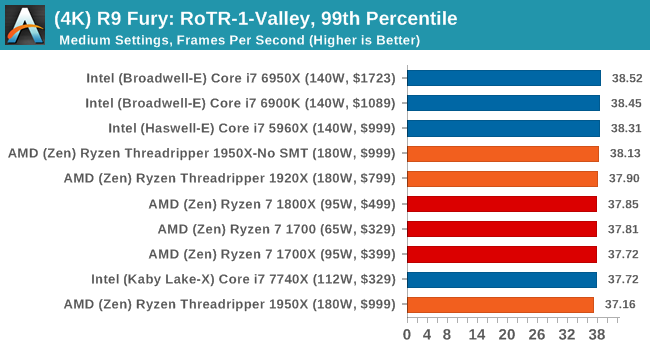
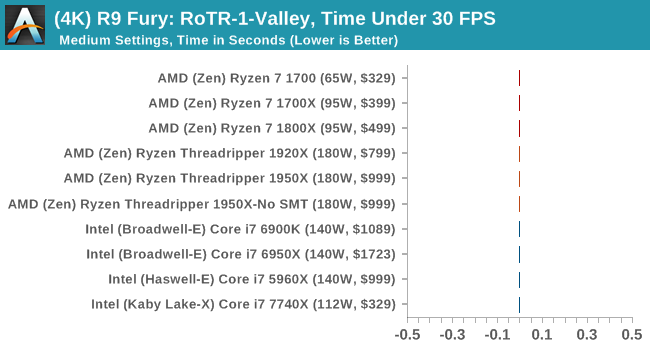
Sapphire Nitro RX 480 8G Performance

1080p

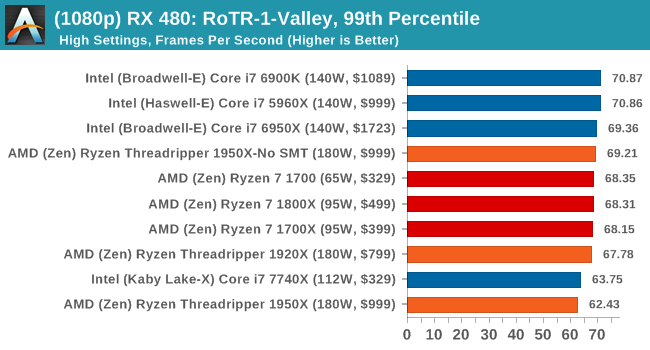
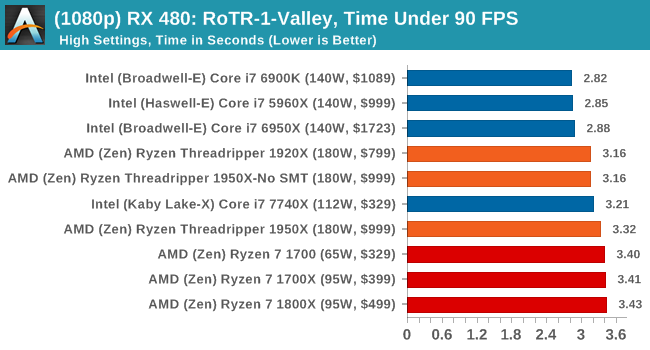
4K
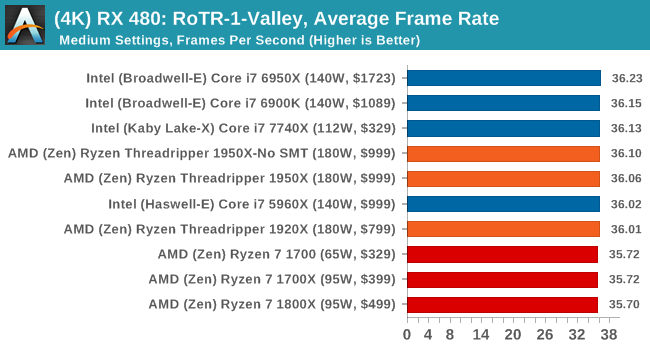
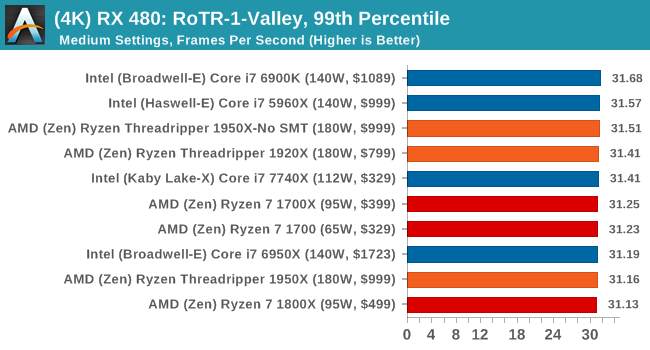
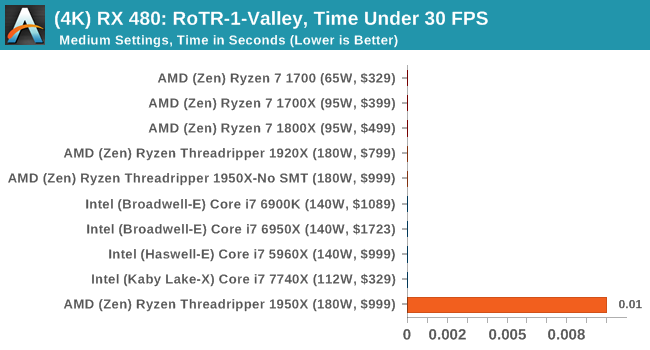
#2 Prophet’s Tomb
MSI GTX 1080 Gaming 8G Performance
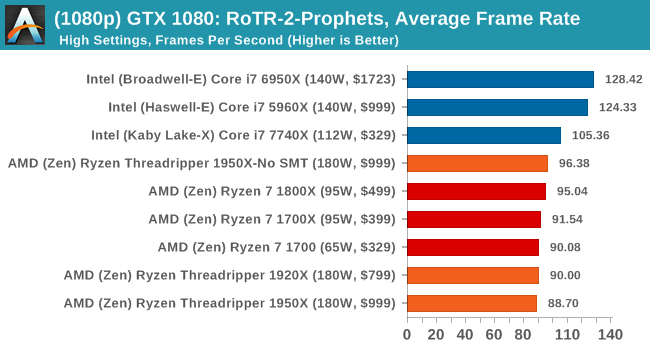
1080p

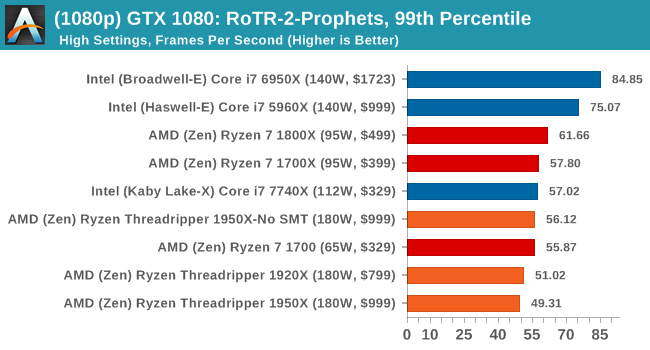
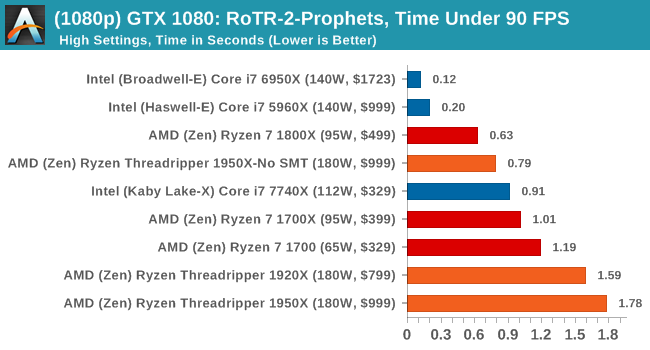
4K
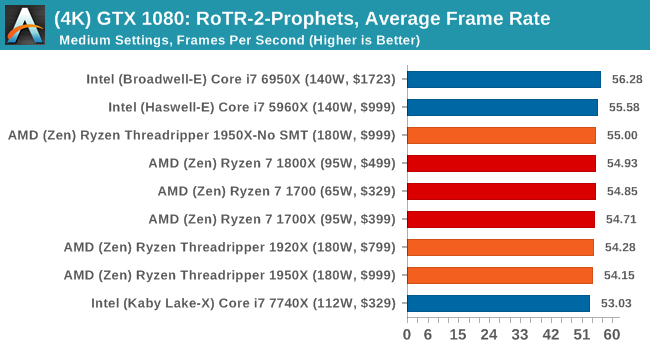
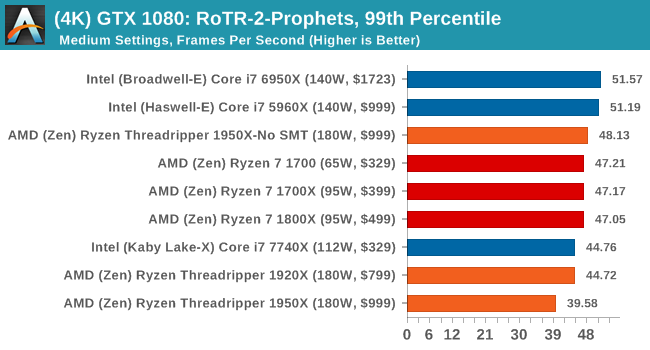
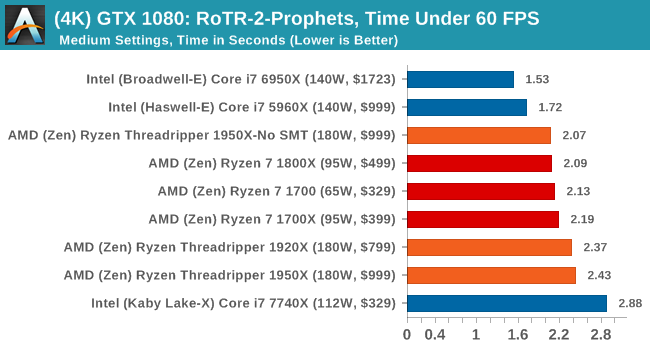
ASUS GTX 1060 Strix 6G Performance
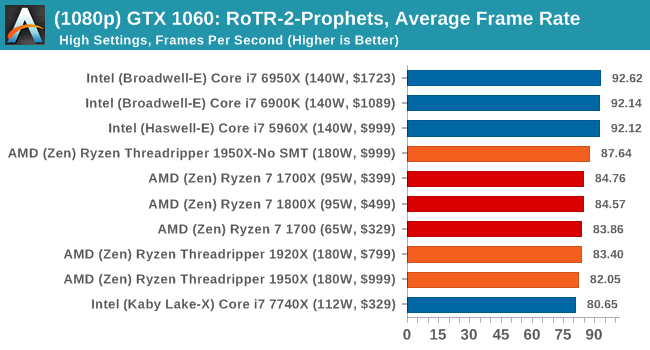
1080p

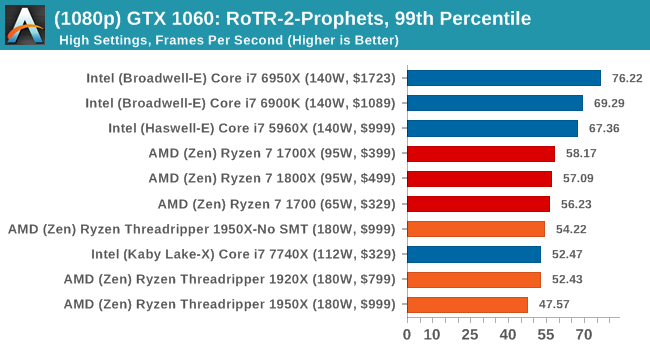
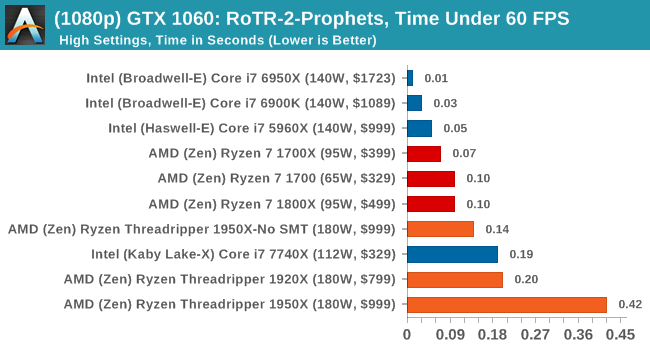
4K
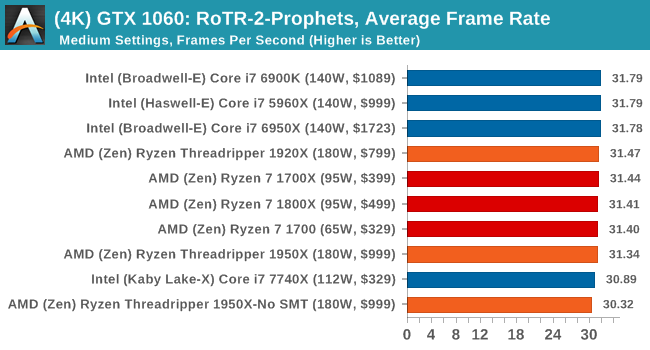

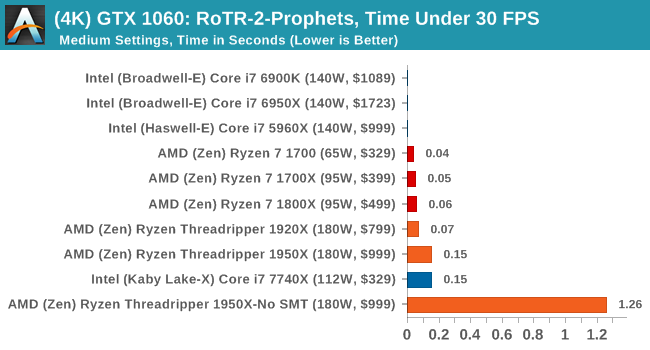
Sapphire Nitro R9 Fury 4G Performance
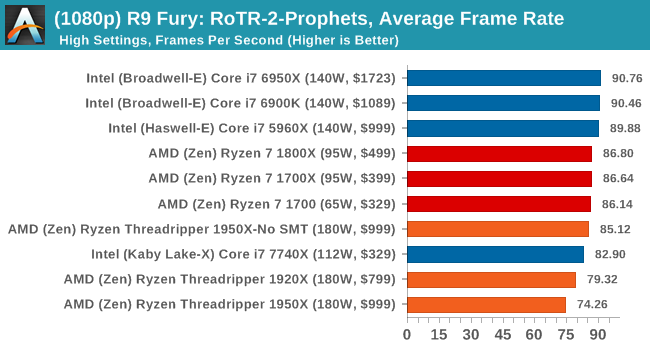
1080p

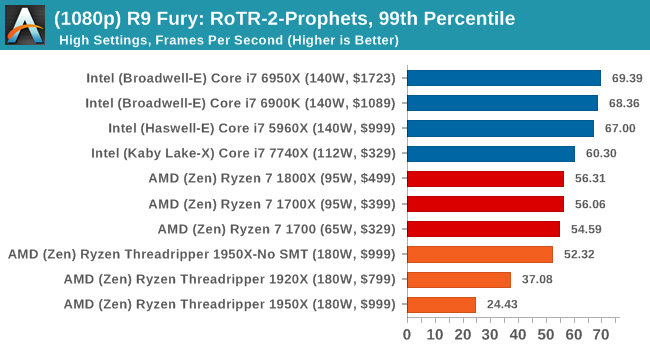
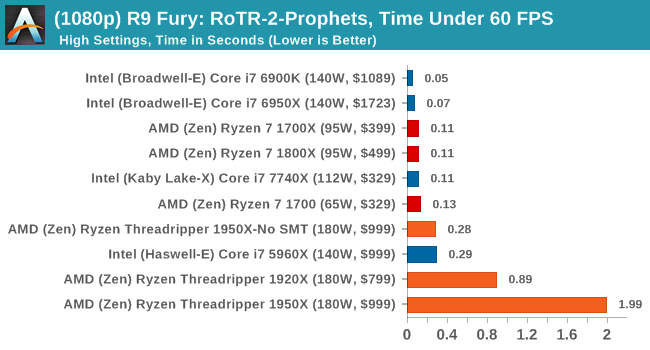
4K
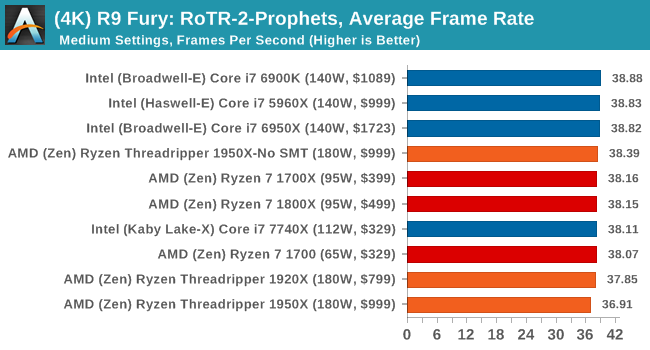
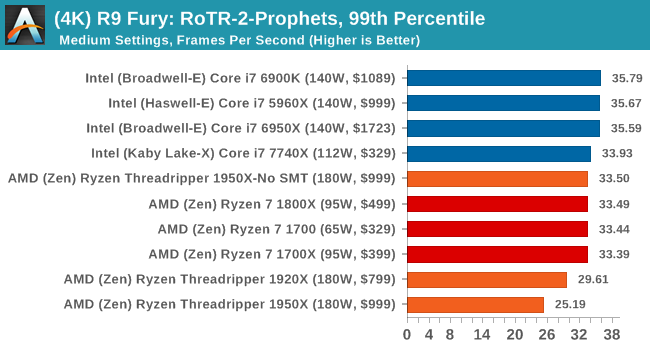

Sapphire Nitro RX 480 8G Performance
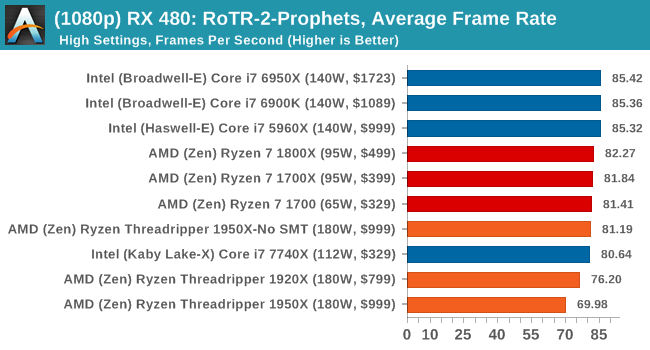
1080p

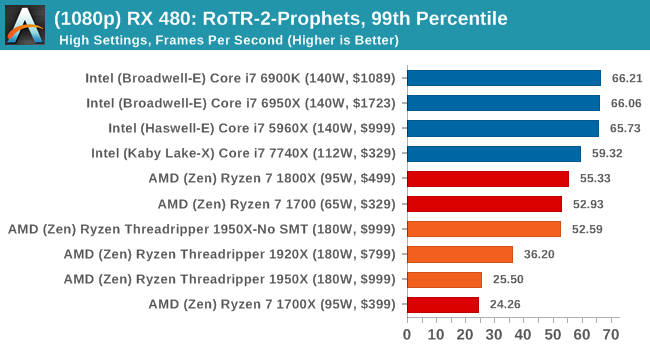
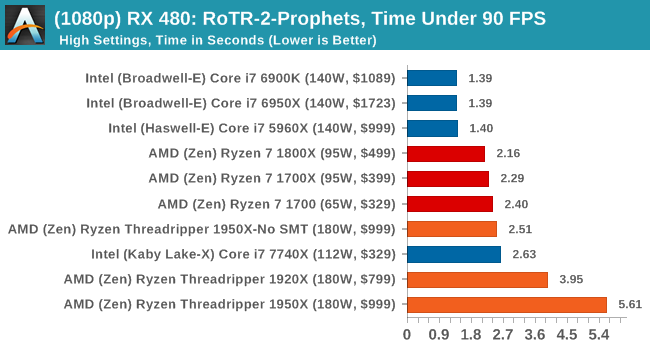
4K
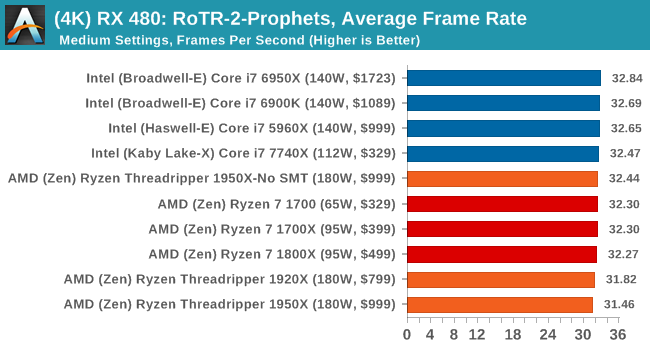
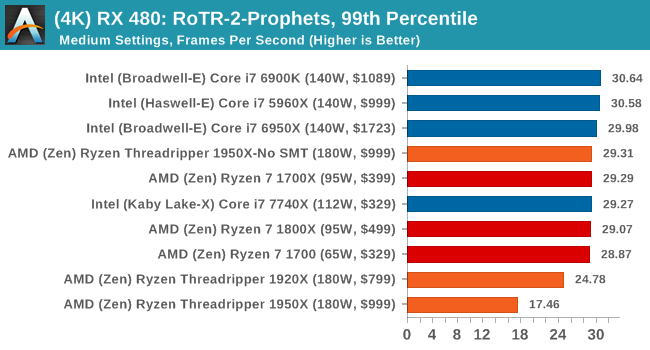
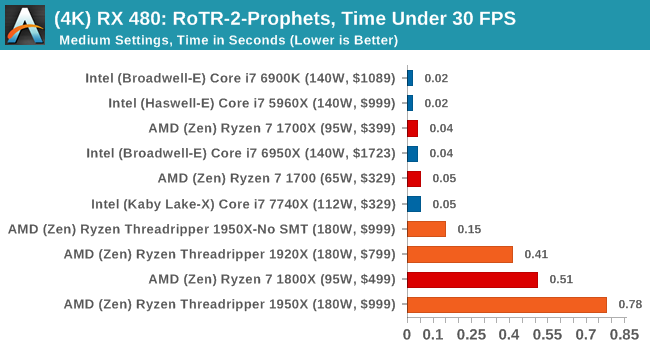
#3 Spine of the Mountain Geothermal Valley
MSI GTX 1080 Gaming 8G Performance
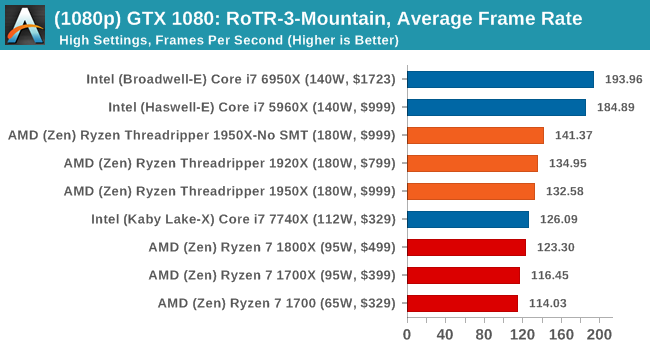
1080p

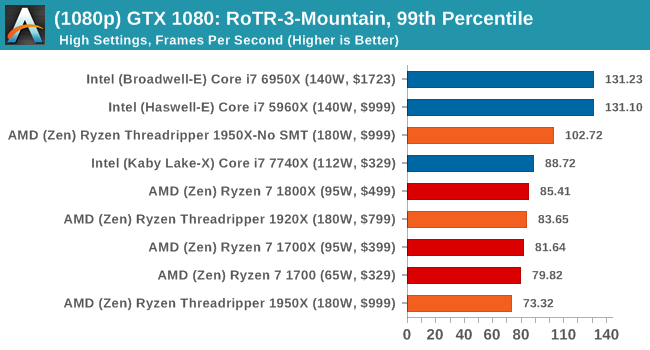
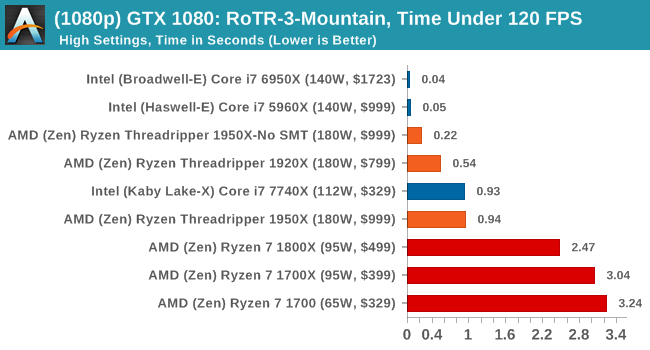
4K
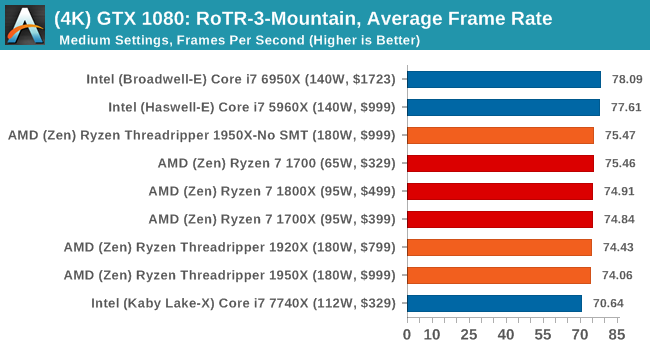
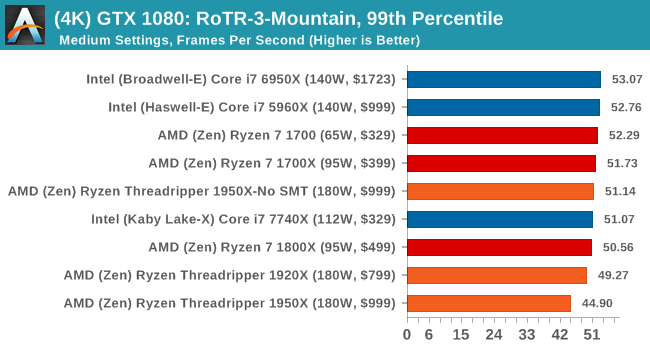
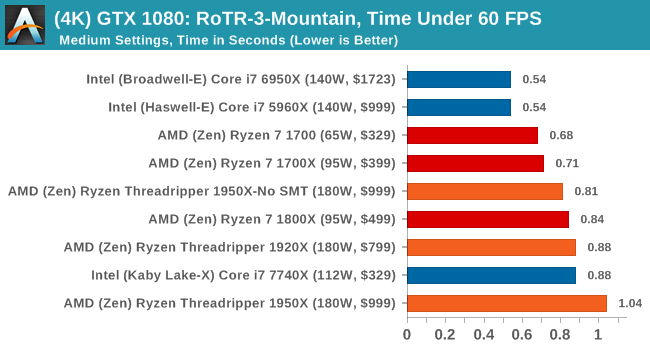
ASUS GTX 1060 Strix 6G Performance
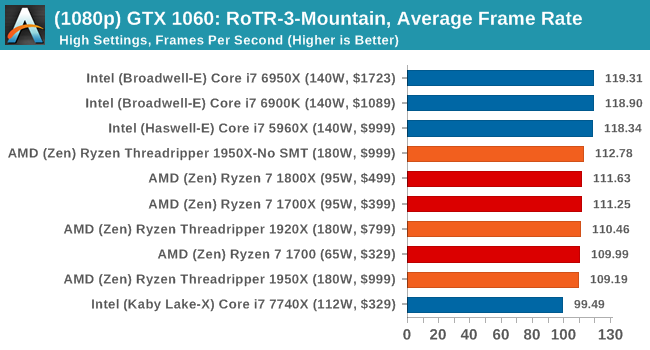
1080p

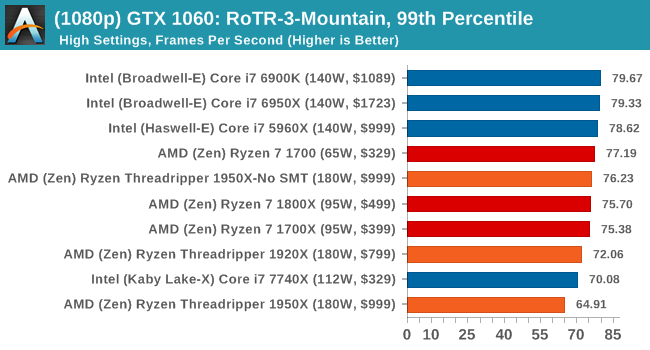

4K
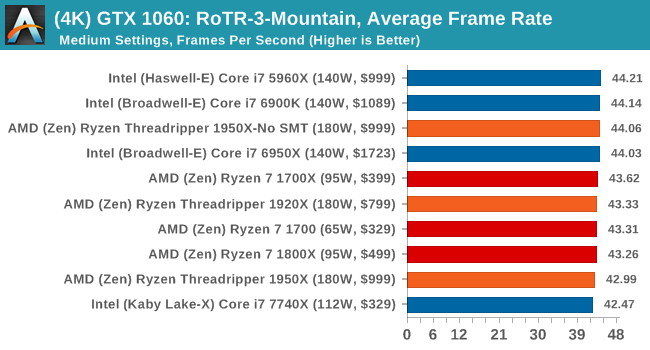
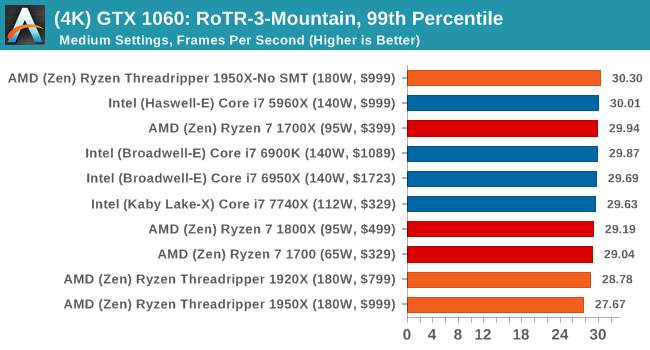

Sapphire Nitro R9 Fury 4G Performance
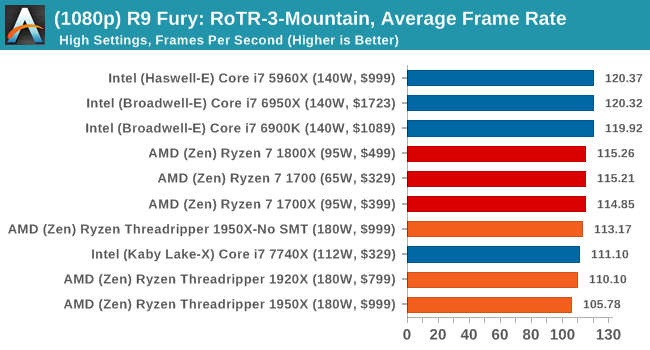
1080p


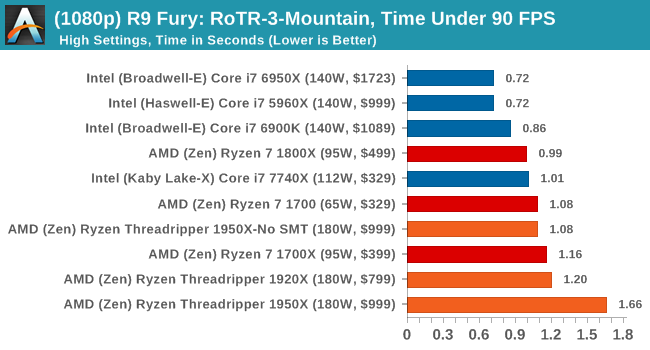
4K
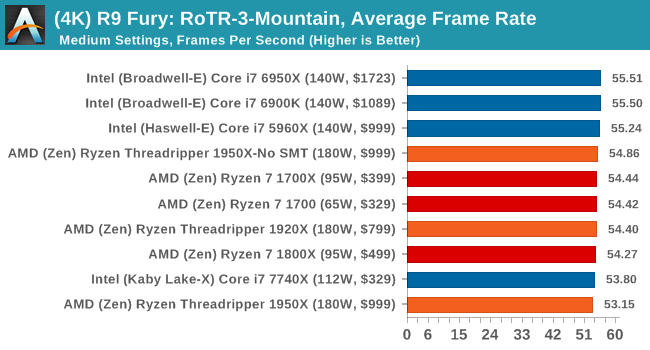
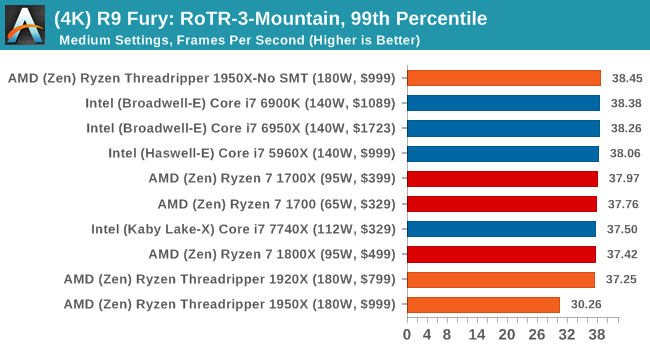
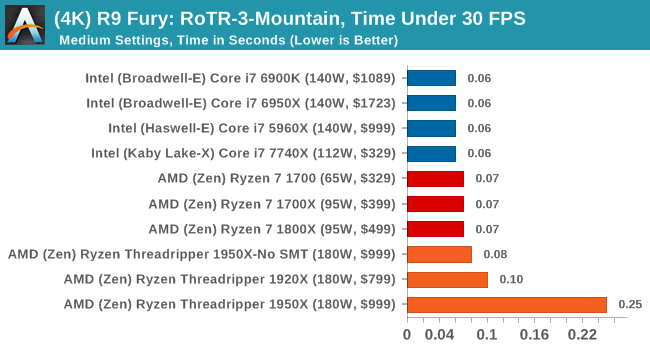
Sapphire Nitro RX 480 8G Performance
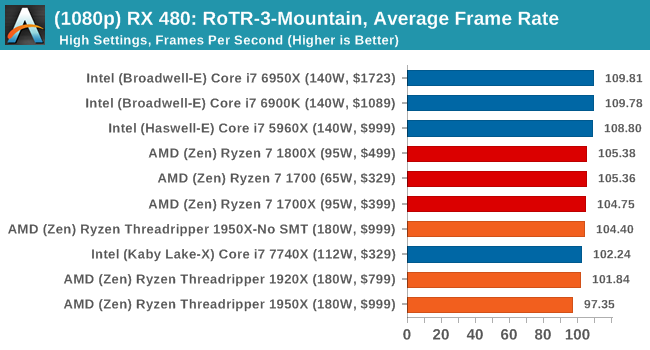
1080p

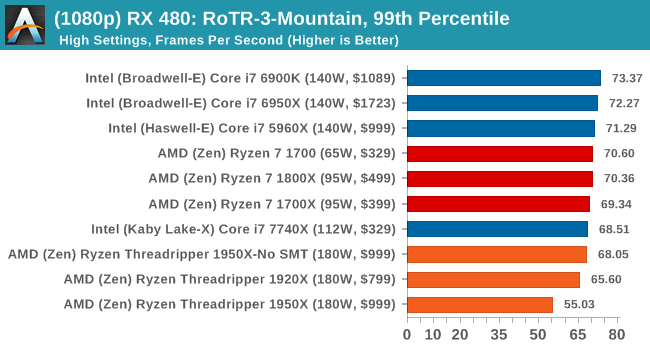
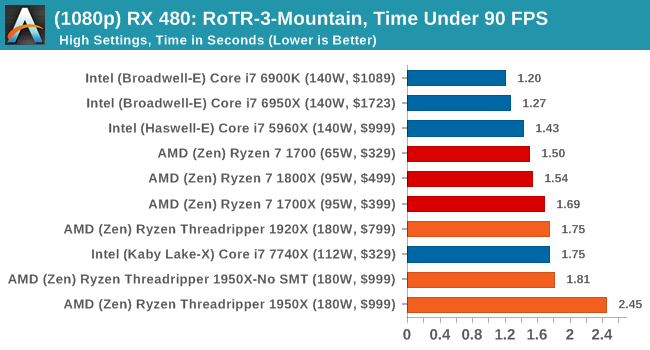
The 4K
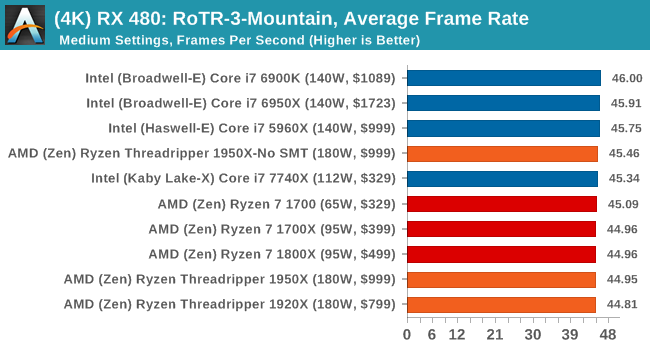
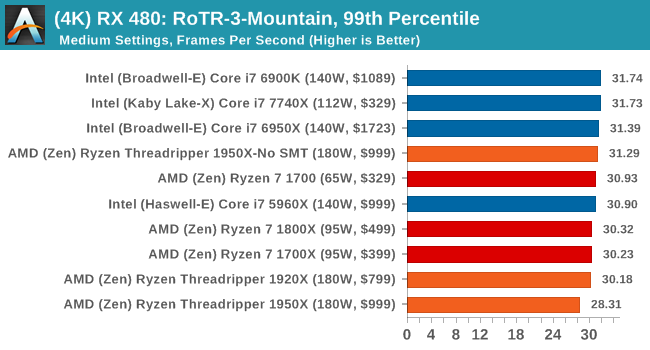
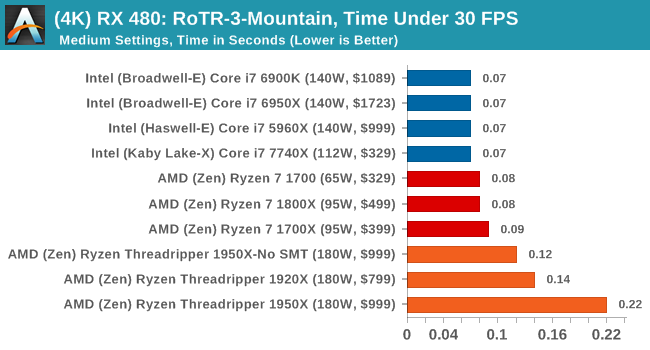
It's clear from these results that the 1950X is not the best gaming chip when in its default mode.




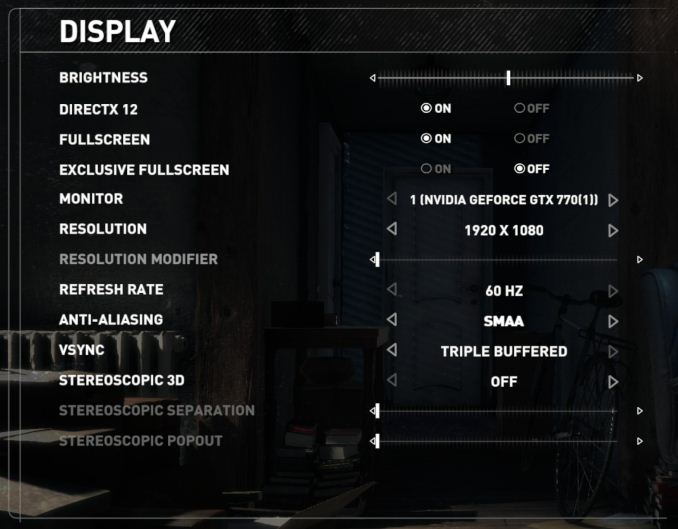











347 Comments
View All Comments
Ian Cutress - Thursday, August 10, 2017 - link
We didn't post gaming performance for Ryzen at launch either, for similar reasons.bongey - Thursday, August 10, 2017 - link
Stop lying , you commented on gaming performance in your conclusion, without even benchmarking it in gaming.That is much worse.
Adul - Thursday, August 10, 2017 - link
How is that lying? They did not post gaming benchmarks. That is what he said.What was mention in conclusion was not part of his statement.Integr8d - Thursday, August 10, 2017 - link
It's called lying by omission...James S - Friday, August 11, 2017 - link
Ian did not lie even by omission. They clearly stated in the Ryzen conclusion and clearly stated in the Skylake-x conclusion why they didn't test gaming.“You can please some of the people all of the time, you can please all of the people some of the time, but you can't please all of the people all of the time”
just4U - Saturday, August 12, 2017 - link
I think it's pretty ignorant of someone to state that Ian is lying in his own comments about articles he has written....alysdexia - Thursday, April 18, 2019 - link
Omission isn't lyging; it's self-censorship.Gothmoth - Thursday, August 10, 2017 - link
intel pays good money for advertising at anandtech....Nfarce - Thursday, August 10, 2017 - link
Listen to you fanyboy crybabies. Tom's and Guru3D did gaming benches too. Go find a Reddit AMD fanboy forum that will give a 100% glowing review of your precious Threadsnapper. You won't find a single credible tech site out there doing it. It's called impartiality. Oh and one more thing ladies: you all are aware that AMD sent the major tech review sites the EXACT same hardware kit for review, right?tuxRoller - Thursday, August 10, 2017 - link
ThreadSNAPPER? If this was intentional, I assume it's meant to be derogatory, but I'm not sure what it is meant to imply.